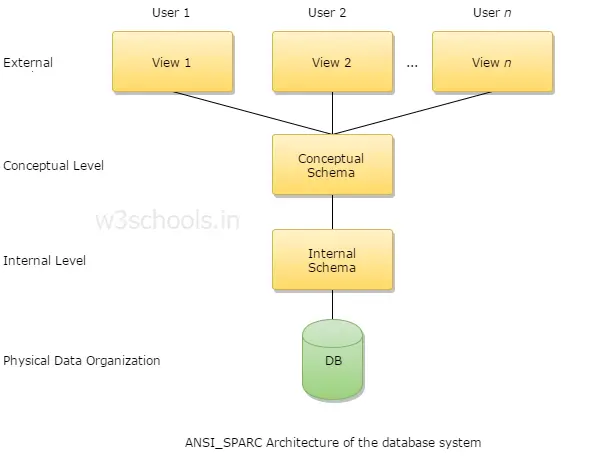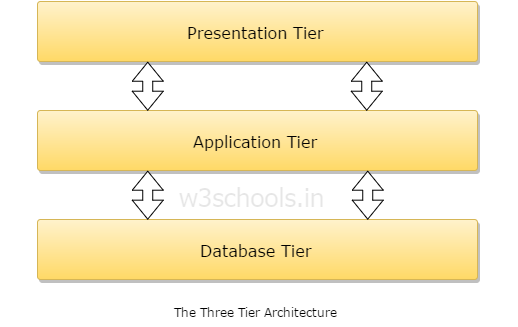Three-Level ANSI-SPARC Architecture
An early proposal for a standard terminology and general architecture for database systems was produced in 1971 by the DBTG (Data Base Task Group) appointed by the Conference on Data Systems and Languages (CODASYL, 1971). The DBTG recognized the need for a two-level approach with a system view called the schema and user views called sub-schemas.
Here is the figure showing the ANSI_SPARC Architecture of the database system:

The levels form a three-level architecture that includes an external, a conceptual, and an internal level. The way users recognize the data is called the external level. The way the DBMS and the operating system distinguish the data is the internal level, where the data is stored using the data structures and file. The conceptual level offers both the mapping and the desired independence between the external and internal levels.
What is Database Architecture?
A DBMS architecture is depending on its design and can be of the following types:
- Centralized
- Decentralized
- Hierarchical
DBMS architecture can be seen as either a single-tier or multi-tier. An architecture having n-tier splits the entire system into related but independent n modules that can be independently customized, changed, altered, or replaced.
The architecture of a database system is very much influenced by the primary computer system on which the database system runs. Database systems can be centralized, or client-server, where one server machine executes work on behalf of multiple client machines. Database systems can also be designed to exploit parallel computer architectures. Distributed databases span multiple geographically separated machines.
The Three-Tier Architecture

A 3-tier application is an application program that is structured into three major parts; each of them is distributed to a different place or places in a network. These three divisions are as follows:
- The workstation or presentation layer
- The business or application logic layer
- The database and programming related to managing layer